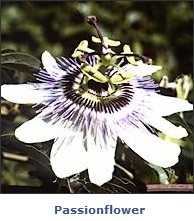Giant Granadilla, strong, rapidly growing vine, member of the passionflower family, native to tropical America. The giant granadilla is grown for its edible fruit, as well as for its ornamental value. The square stems bear rounded leaves and big fragrant flowers that can reach 8 cm (3 in) in width. The flowers are white outside, reddish inside, and have a crown of white and purple filaments. The oblong greenish yellow fruit, which is also called granadilla, grows to about 20 cm (about 8 in) in length and ripens in the summer. The fruit has a brittle rind, and many flat, small seeds are contained within the gelatinous, slightly acid pulp. The green fruit is boiled and served as a vegetable. The pulp of ripe fruit is eaten directly or used in cold drinks.
Scientific classification: The giant granadilla is a member of the family Passifloraceae. It is classified as Passiflora quadrangularis.






